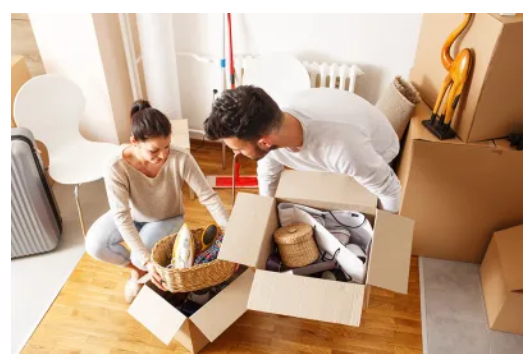How to Pack Efficiently for a Small Move: Tips from My Own Experience
Moving, big or small, can be stressful, but I’ve found that a small move doesn’t have to be overwhelming. Through my experience, I’ve gathered some strategies that have helped me pack efficiently, save time, and reduce stress. Let me walk you through how to pack like a pro for your small move, whether relocating across town or just moving a few blocks away.
Why Packing Efficiently Matters for Small Moves
When it comes to small moves, efficiency is key. It might seem like you don’t have much to pack, but it’s easy to underestimate the effort involved. Small spaces can contain more items than you realize, and sorting, packing, and moving can become time-consuming if not done properly. By packing efficiently, you:
- Save time and energy
- Reduce the risk of items getting damaged
- Make unpacking a breeze
- Save money on moving supplies or professional movers
Whether you’re working with movers for small jobs or movers in Jersey City, NJ, a little organization goes a long way.
Step 1: Start With a Solid Plan
Before diving into packing, I always start with a plan. Here’s my process:
- Assess what you need to move: Take a walk around your space and evaluate which items are coming with you. A simple list will help you stay focused.
- Create a packing timeline: For smaller moves, I typically give myself about 1-2 weeks to pack, with specific days dedicated to certain rooms or types of items.
- Gather packing materials early: I’ve mistakenly waited until the last minute to get boxes and bubble wrap. It’s a hassle! Collect boxes, tape, markers, and other supplies well beforehand.
- Declutter first: Small moves are the perfect time to downsize. Go through your belongings and sort items into categories: keep, donate, and toss. Trust me, letting go of unnecessary things feels amazing.
Step 2: Use the Right Packing Materials
Regarding packing for a small move, I’ve learned that the quality of your packing materials can make a big difference. You don’t need to spend a fortune, but investing in sturdy boxes and protective wraps for fragile items is worth it. Here’s what I usually grab:
- Boxes of various sizes: I use smaller boxes for heavier items, while larger boxes are great for lighter, bulkier things like bedding.
- Packing tape: Make sure it’s durable! I once used cheap tape that wouldn’t hold, which was frustrating.
- Bubble wrap and packing paper: These are lifesavers for dishes, glassware, and electronics.
- Markers: Labeling is critical. You’ll thank yourself later.
Pro Tip: If you’re working with movers for small jobs ask if they provide packing materials or have any recommendations for local suppliers.
Step 3: Start Packing Early and Room by Room
One of the most valuable lessons I’ve learned from moving is to start packing early. Giving yourself enough time makes the process less stressful and more manageable. I like to pack room by room, starting with the areas I use the least (like storage closets or guest rooms).
Here’s how I usually break it down:
The Bedroom
- Clothes: I use vacuum-seal bags for off-season clothes or bulky items. For day-to-day outfits, I pack them in boxes or leave them hanging in wardrobe boxes for easy transfer.
- Jewelry: To avoid tangling, I store my jewelry in small zip-lock bags or separate each piece in an egg carton.
- Bedding: Sheets, comforters, and pillows get packed last since I’m using them until the move.
The Kitchen
The kitchen always takes more time than I expect, so I try to pack it early.
- Dishes: I wrap each dish in packing paper and stack them vertically in boxes. It’s a trick that minimizes the chance of breakage.
- Pots and pans: I nest them inside one another and add padding between them.
- Food: Perishable items should be used up before the move. As for canned goods and pantry items, I box them up in small, sturdy boxes to avoid any accidents.
The Living Room
- Electronics: I use the original boxes if I still have them. If not, I wrap each electronic item in bubble wrap and label the cords separately.
- Books: Books get heavy quickly, so I pack them in small boxes to avoid overloading.
- Decorations: Fragile items like picture frames and artwork get special attention with bubble wrap and labeled “fragile” on all sides of the box.
The Bathroom
- Toiletries: I group items in small containers or plastic bags to avoid spills. Keep out the essentials until the last day.
Pro Tip: I always pack a personal essentials box, containing things like toiletries, medications, a few changes of clothes, and chargers. That way, I don’t have to dig through boxes when I get to my new place.
Step 4: Label Everything Clearly
Labeling boxes properly has saved me so much time during the unpacking process. I usually label each box with:
- The room it belongs in
- A brief description of its contents
- Any important notes like “fragile” or “this side up”
If you’re hiring movers for small jobs or movers Jersey City NJ, this step can be crucial to ensuring everything ends up in the right place.
Step 5: Make Use of Moving Day Hacks
I’ve learned a few hacks over the years that make moving day smoother:
- Leave clothes on hangers: Wardrobe boxes are great for this, but you can also cover groups of hanging clothes with garbage bags for a quick and cheap solution.
- Pack plates vertically: Instead of stacking plates flat, stand them up vertically in boxes. It reduces the risk of breakage during the move.
- Use linens as padding: Wrap fragile items in towels or bedding to save space and protect them at the same time.
- Keep hardware together: If you disassemble furniture, tape the screws and small parts directly to the furniture pieces or put them in labeled bags.
Step 6: What to Do After the Move
Once you’ve packed, moved, and unpacked, there are a few things I always do to settle in quickly:
- Unpack essentials first: Start with the kitchen and bedroom, since these are the areas you’ll need immediately.
- Clean as you go: Unpack in stages, cleaning each room as you empty the boxes. It’s more efficient than doing a full clean after everything is unpacked.
- Dispose of packing materials: After the move, I always recycle the boxes and packing materials. Some movers will even take them back for reuse, so it’s worth asking.
Final Thoughts
Packing for a small move doesn’t have to be stressful if you plan ahead and stay organized. With the right packing materials, a little decluttering, and a clear timeline, you can make your move smooth and hassle-free.






